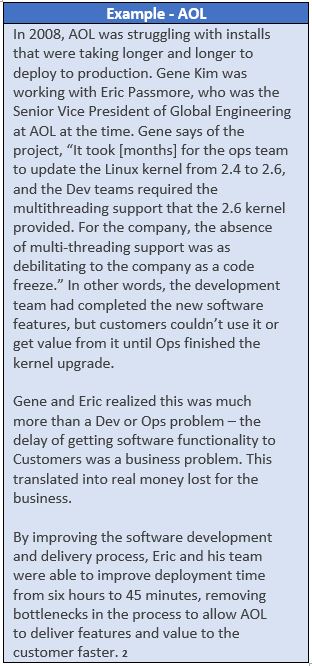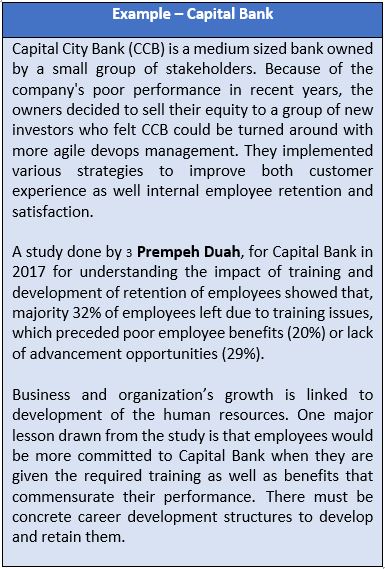When an organization chooses to adopt the DevOps transformation, the traditional ways of budgeting and financing needs to be radically changed as well. The annual budgeting, which requires executives to predict and forecast at the start of the year, is basically flawed. The technique of allocating and blocking funds for 12 months straight in this era of disruption is as old as Methuselah. To top it all, once budgets are set the CEOs spend a lot of time in reconciliation between what’s needed today and what was predicted, clubbed with organizational politics, personal agendas, power-play decisions which all adds to the complexity.
As I have discussed in my last article, DevOps transformation would require a considerable change in an organization’s working model, including budgeting. Let’s look at some of the popular budgeting models being used in high performing organizations be it startups or large enterprises –
I. Shorter Budgetary cycles and Control gates
- This model still uses traditional annual budgeting cycle but has review cycles or Control gates which is done quarterly on a rolling wave basis.
- Plans and allocations are jointly reviewed based on the funds allocated annually and prioritization decisions made for that quarter.
- Benefits include – lesser financial risk, improved business visibility on dynamic market demands, value-driven delivery by forcing teams to think for Minimum Viable Product (MVP).
- Challenges of this model are – Annual budgeting is project-based and thus funding cannot be reallocated across projects forcing execs to still wait for the annual cycle. If the overall process of approvals is not kept simple, the quarterly review process would create a climate of constant budgeting where managers are spending more time racing for funds rather than doing actual work.
II. Product or Feature Based Budgeting
- This model delegates the budget decisions to the product owner who can prioritize as per the assessment of the product portfolio. The primary product owner will liaise with the business to decide on Go/NoGo activities.
- He can further allocate the budget to projects within his portfolio or across products. The product owner has to keep the focus on the MVP considering the market trends, customer requirements, and prioritization.
- Benefits include – simplicity and empowerment to the frontline who can decide where to invest and where not to. It influences go-to-market and product reliability too by able to respond to changing market trends and demands to increase the Business Agility.
- The challenges of this model are – requires more product-based thinking. Teams focus on including the latest jazzy features and ignoring maintainability and technical debt. Funding for maintenance of the product/s should also be considered.
III. Innovation Based Budgeting
- This model is based on Innovation based products that are measured against end-user product engagement, customer satisfaction, perceived value to name a few. Based on the effectiveness of the product, additional funds are allocated to teams.
- Benefits include – a lot of fresh ideas flow for innovation and organizations have an option to choose what might work. It also encourages good ideas to quickly flow to customers improving customer-centricity. 1Customer-centric businesses generate greater profits, increased employee engagement, and more satisfied customers.
- Challenges include – to perceive and predict the effectiveness of the product which requires continuous evaluation of risk, value, growth, and potential ROI of the product.
When organizations and technology leaders evaluate whether to undertake a technology transformation initiative with a focus on continuous improvement, the first ask is about Return on investment (ROI). Afterall it’s all business!! Initially measuring the impact of a process as far-reaching and transformational as DevOps, within the context of ROI may seem impossible, but now a lot of organizations have started attempting to put volumetrics and quantification to it.
When calculating the returns, organizations have two categories under which they can evaluate the ROI – Value Driven and Cost Driven approach.

Value driven approach would take precedence over Cost driven approach when it comes to calculating returns. Value driven factors like Value Gained from Unnecessary Rework Avoided per Year or Potential Value Added from reinvestment in New Features, will enable organizations to respond to market pressures quickly. Value cost can also include opportunity cost like opportunity lost by not adding additional features in a timely manner.
It cannot be a single number, it would be always classified as qualitative assessments and quantitative matrix. For example, cultural change can be accessed through conversations and assessments but it’s difficult to quantify. On the other-hand the amount of time, and therefore money, spent and lost on unnecessary rework each year is a significant hit to productivity and the technical economy. Since it represents costs which can be saved by avoiding unnecessary work each year, it’s quantifiable and can be improved by adopting DevOps processes.
Cost Driven Approach would primarily focus on increased savings which are realized by implementing DevOps. Cost-saving by implementing Automation, in place of manual processes or time and cost saved by implementing new technology as a solution are efficiency-based savings. These can be realized by continuous improvement and implementing LEAN DevOps practices. For example – Costs saved by reducing Downtime over a year would not only showcase business resiliency but significant savings in terms of infrastructure support costs by reducing chances of failure and able to restore service quickly.

ROI projections for a portfolio, would have short-term as well long-term returns.
Short terms gains – from Competency building like trainings, self-learning, hackathons; People investment through – rewards, recognition to motivate and retain high performers; Reducing rework efforts, will lead to highly satisfied employees. Retaining existing employees is more cost effective, preserves organization knowledge and gives additional advantage by having strong technical force which is continuously learning. However only have a cost-centric approach is insufficient and would not yield results. Only focusing on cost savings indicates to technical staff that they will be automated out of a job rather than being liberated from drudge work to better drive business growth, which has additional negative effects on morale and productivity. Striking the right balance is a must.
Long term gains – efficiencies that are realized in the first year “no longer count” beyond year two as the organization adjusts to a new baseline of costs and performance. Long terms benefits gained from DevOps implementation like reduced throughput due to new ways of working, improved CAPEX through more services hosted in CLOUD, reduced revenue leakage and improved wallet share through new business opportunities with existing and new customers, improved customer experience, etc should be measured for a duration of a year. After which they must be re-baselined as per the budget considerations as well as market trends for business agility.
Point to note is with other organizational initiatives ongoing it won’t be right to attribute entire ROI to pure DevOps initiatives. But companies who are middle or low performers in terms of DevOps implementation have the maximum to gain through various value and cost-driven approaches. By continuously burning down technical debt, improving processes, savings in time, and cost will encourage them to work and make progress towards operational efficiency.
References:
1 https://www.scaledagileframework.com/customer-centricity/
2 https://puppet.com/blog/devops-solves-business-problems-gene-kims-top-aha-moments/
3 http://www.academicjournal.in/download/725/2-4-241-900.pdf

 English | EN
English | EN 